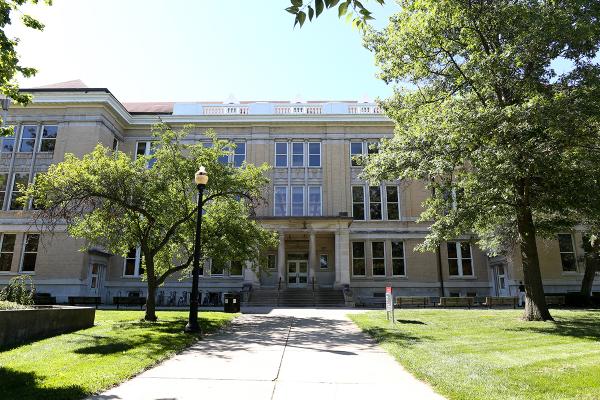Schlumberger donates software package to Ohio State

Schlumberger, the world’s largest oilfield services company, has donated a package of its software technology to the School of Earth Sciences in the College of Arts and Sciences at Ohio State. This gift will support major advances in Earth sciences research, enhance student learning and career preparation, and continue Schlumberger’s relationship with Ohio State, which dates back to 2013.
A technology provider to the oil and gas industry for reservoir characterization, drilling, production and processing, Schlumberger’s package of software technologies will allow students to interpret seismic and well log data, build reservoir models, run simulations and create maps.
“This is a transformational gift for the School of Earth Sciences,” said David Manderscheid, executive dean and vice provost of the College of Arts and Sciences. “It provides tremendous opportunities for our students who can learn state-of-the-art software that few other universities can provide.”
The software will be used to complement teaching and research in the School of Earth Sciences, which offers a track in petroleum geology and geophysics for undergraduate students. This specialization combines aspects of geological sciences and geophysics, equipping students for employment at petroleum companies or further study at the graduate level. By providing students hands-on access to industry-standard software, they will develop important skills before entering the workforce.
“A gift like this puts Ohio State in the same playing with the top Earth sciences schools in the world,” said Derek Sawyer, assistant professor in the School of Earth Sciences who specializes in petroleum geology and geohazards. “It’s imperative for any student looking into the oil and gas industry to develop skills you need every day, and now we are giving our students an equal playing field with their competition.”
As a result of a previous gift from Schlumberger, Sawyer already has been using Petrel E&P software platform, a software platform for reservoir modeling and simulation, in his classroom, where he teaches his students to use the technology to “see” seismic anomalies beneath land and ocean that could be oil or gas. Sawyer worked as an operations geologist at ExxonMobil before entering academia, and speaks from experience on the importance of the gift.
“Every week, the students are in the computer lab, and I teach them how to use the software. It’s one of the primary tools that geologists use day in and day out, and the same software used by scientists at major oil companies,” he said. “We’d be doing our students a disservice not to have this technology and integrate it in the classroom.”
This new gift will provide additional Schlumberger software to the School of Earth Sciences, including Techlog wellbore software platform, a platform for aggregating and interpreting borehole logging data. In the field, logging data relayed from an oil or gas well is used to make operational decisions on drilling. Since wells can’t be observed directly, logging data from samples and physical measurements are critical for making decisions which have significant environmental, commercial and operational implications.
“This software makes visualizing the data really easy,” said Ann Cook, associate professor in Earth sciences, who specializes in borehole geophysics and uses logging data and images to study gas hydrates. “This is a great opportunity for students to be exposed to industry-standard software that they need to know about.”
Joachim Moortgat, assistant professor in Earth sciences, and his research group develop advanced tools for next-generation reservoir simulators, which model flow behaviors of oil and gas beneath the earth’s surface. Through this gift, he and his students will benefit from the Schlumberger ECLIPSE industry-reference reservoir simulator. Moortgat teaches a reservoir modeling course to undergraduate and graduate students, and he says that having access to ECLIPSE simulator will help prepare students for the intricacies of reservoir simulation and modeling.
“Having access to Schlumberger's software will allow the students to appreciate the full complexity of real world field-scale modeling challenges,” said Moortgat.
With Schlumberger’s software package, students across the School of Earth Sciences will benefit from enhanced research tools to complement their education and career readiness.
“I use Schlumberger products to load, view and interpret data for my research,” said Bennett Trotter, a master’s student in the School of Earth Sciences who graduated in May. “The Schlumberger products I learned to use are commonly used in industry. The experience I have gained with these products will aid me as I begin looking for a job for after I graduate.”
Also included with this gift is the addition of standalone licenses, which will enable faculty and students to have access to the software in the field — far from a campus computer lab. Cook made use of a standalone license earlier this year on a rig off the coast of New Zealand, when she could use the Techlog platform to open and visualize data.
“With a tool attached to the drill bit, we could watch the data coming in,” she said. “We could look at all of the data and do initial quality control, processing, and interpretation using the Techlog platform.”
While Sawyer, Cook, Moortgat and their colleagues will continue to use the software in the classroom with their students, they also say that faculty and postdocs will use the Schlumberger software with seismic data on a daily basis as part of their research.
